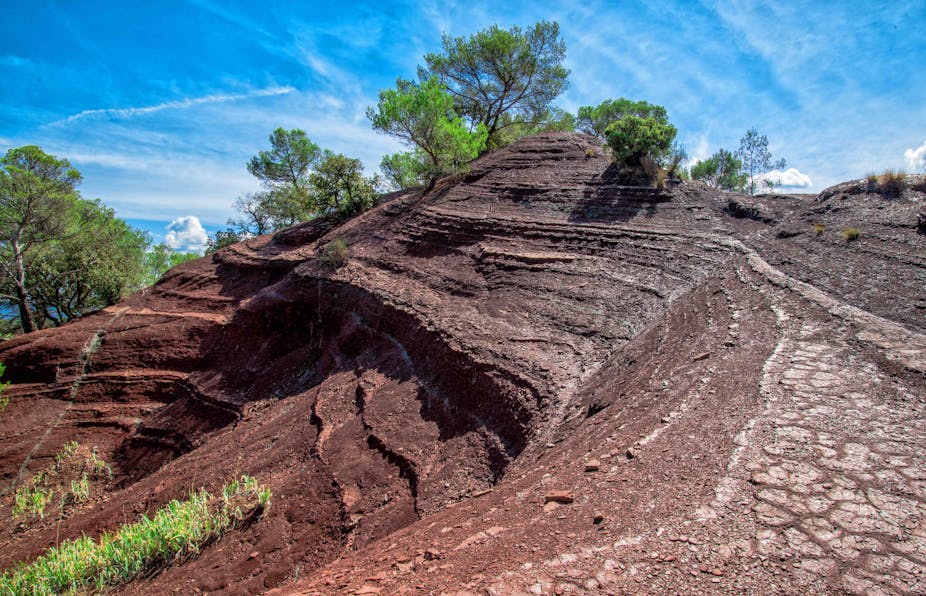Exobiology is an exciting discipline. It is based simultaneously on the latest data from astrophysics, planetary geology and the origins of life on Earth, all of which are evolving as we continue to study them. It could be said that exobiology is essentially Earth-oriented, as it’s based primarily on knowledge learned here that we try to apply to other possible or observed situations.
As revealed through the study of geology, the biology of evolution allows us to understand how life forms came to populate our planet, and also to anticipate its future (an aspect that is unfortunately underdeveloped at present). Indeed, these disciplines are based on the assumption that the physicochemical and biological rules that are exerted on the Earth since it was formed are essentially the same elsewhere in the universe (all this in the absence of proof – yet – that life exists elsewhere).
Reading the future from the past
The study of the fossil record often upsets our preconceptions and constantly raises questions, almost as if we are regularly discovering a “new” planet. Indeed, whether it is at the beginning of the birth of life on Earth or in the great episodes of the evolution of the Paleozoic (the Primary Era) and the Mesozoic (the Secondary Era), many forms of life very different from those we know today emerged, developed and had their time of glory.
Alongside these successes are many extinct communities and lineages – trial runs, as it were. Some were present at the origin of life as we know it, others are known only by fossils. It’s as if each great stratum of life corresponded to different planetary conditions, with their particular procession of living creatures. How many more of these “exotic” forms of life are waiting for us to be discovered in the Earth’s archives?

The Ediacaran fauna in Australia (-575 Ma), the Burgess faunas in Canada (-625 Ma) and Chengjiang fauna (-530 Ma) in China testify to the complex lifeforms that arose early in the history of our planet that are now extinct. Recently the beautiful discovery of an enigmatic fossil in Gabon has pushed the beginnings of multicellular life to more than 2 billion years.
Much closer to us in time is amber, from the middle of the Cretaceous (99 million years), tree resin in which plants, insects and even small animals became trapped and that subsequently fossilised. They’re an extraordinary record of life on earth, including a fragment of tail of a dinosaur – with feathers.
For scientists, these previously unknown families, orders and forms suggest that the territories in which they developed were isolated, almost like planets themselves – ancient islands with unique fauna, the evolutionary hotspots of the past…
What does the sci-fi say?

Science fiction tends to look at the fate of humanity in the future, or of time travellers as they search for resources on a long-ago Earth. They may seek to escape from the destruction of our planet (as in the series Terra Nova) or be caught up in unearthly mysteries (Fringe.
Indeed if the search for a habitable exoplanet could serve humanity (something central to the series The Expanse), reaching back to our planet’s “origins” is logical… if we could solve the problem of travel time and its associated paradoxes. If we change the past, what will be the impact on the “future” in which we now live? Fiction has extensively looked at multiverse hypotheses, including Men in Black and The Man in the High Castle.
In the same way that we need to fully understand the Earth’s current biodiversity, the paleodiversity of our planet is full of information on the processes of evolution and functioning our planet, and even the discovery of new resources and, in a sense, “lost worlds” – Lake Vostok under the Antarctic ice sheet, the glacial valleys of Greenland revealed by melting ice…
Preserve the archives of the Earth
While understanding the past functioning of our planet is crucial, paleosciences aren’t yet in the spotlight in the academic world. The only exception is when they concern the “near” past and allow us to understand better the variations of the climate and the development and lives of the first humans.
There is currently a lack of will to preserve the fossil record of our ancient rocks and sediments that is the Earth’s archives. Every day and everywhere on our planet, unpublished information is destroyed, crushed, ground, paved over, polluted, damaged. How many unique fossil biota have been yet destroyed ?. As with archaeology, we can’t keep everything from the past, but “preventive paleontology” is essential if we are to understand the origin of our planet and the life forms that have lived here.
Thankfully, there is an enthusiasm among the general public for these sciences of the past, from museum expositions to local initiatives. Investments in research and the preservation of our paleontological heritage can even be a source of geotourism. A leading example is South Africa, which as palaeontology a national cause or public enthusiasm in Argentina (https://palaeo-electronica.org/content/2014/1003-comment-paleontology-in-argentina) and provides substantial resources. Compensating for the lack sufficient resources in the paleosciences, the work of citizen scientists also helps us to reach back into the Earth’s archives – and allow us to better understand its future.


